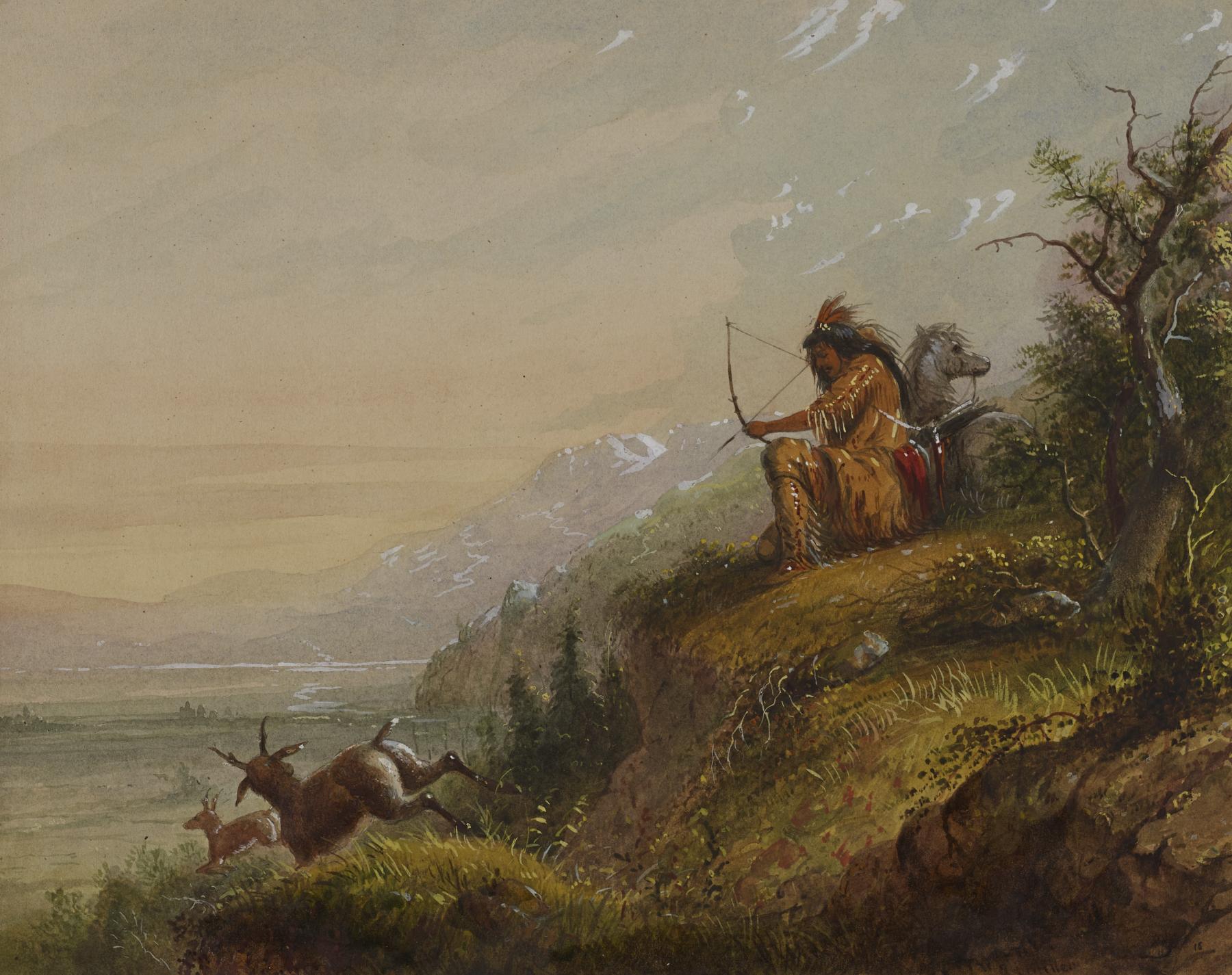A Pawnee Indian Shooting Antelope
(18th and 19th Centuries )
Extracts from Alfred Jacob Miller’s original text, which accompanied his images of Native Americans, are included below for reference. These words, which shaped how Miller’s contemporaries viewed the watercolors, reveal the racism and sexism embedded in 19th-century exploration and colonization of the western part of what is today the United States.
"As hunter, keen and active in pursuit of game, the Pawnees were well enough,- in other respects we could not say much for them, a band of about 20 came down on us one day as we were encamped, and although in their war paint, and looking ripe for mischief, made signs of friendship and good will;- our interpreter was put into communication, and among other questions, he was directed to as, 'where they were going?' Our gravity was sorely tried by the answer they made us and the perfectly innocent look that accompanied it. 'Oh,' said they, 'we are only going over here to the Mandans to try and steal a few horses.' Well - well. By dint of presence &c., we rid ourselves of them as quick as possible, a double guard was ordered out at night, and a general over-hauling of all the rifles in camp, amid the curses loud and deep of the bellicose trappers.A.J. Miller, extracted from "The West of Alfred Jacob Miller" (1837).
In July 1858 William T. Walters commissioned 200 watercolors at twelve dollars apiece from Baltimore born artist Alfred Jacob Miller. These paintings were each accompanied by a descriptive text, and were delivered in installments over the next twenty-one months and ultimately were bound in three albums. Transcriptions of field-sketches drawn during the 1837 expedition that Miller had undertaken to the annual fur-trader's rendezvous in the Green River Valley (in what is now western Wyoming), these watercolors are a unique record of the closing years of the western fur trade.
Inscription
Provenance
Provenance (from the French provenir, 'to come from/forth') is the chronology of the ownership, custody, or location of a historical object.
William T. Walters, Baltimore, 1858-1860, by commission; Henry Walters, Baltimore, 1894, by inheritance; Walters Art Museum, 1931, by bequest.
Conservation
| Date | Description | Narrative |
|---|---|---|
| 4/1/1950 | Treatment | cleaned |
Geographies
USA (Place of Origin)
Measurements
H: 10 15/16 x W: 13 3/8 in. (27.8 x 34 cm)
Credit Line
Commissioned by William T. Walters, 1858-1860
Location in Museum
Not on view
Accession Number
In libraries, galleries, museums, and archives, an accession number is a unique identifier assigned to each object in the collection.
In libraries, galleries, museums, and archives, an accession number is a unique identifier assigned to each object in the collection.
37.1940.68





